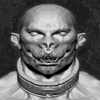Maya User wanting to be a Vendor
 micahmcneely_c2eaf79540
Posts: 0
micahmcneely_c2eaf79540
Posts: 0
Hi DAZ Community!
I am a Maya,XSI, and Max user and I am trying to decide the best work flow for getting a DAZ product on the marketplace. I have looked at the tutorials and just find the interface and outline counterproductive for some reason? Any help would be grateful!!!!
Thanks,
Micah
http://micah3d.net/


Comments
Hi! Those are some nice-looking items in your portfolio. Before you do any of the following, watch some orienting tutorials.
When you're done with those, and able to basically navigate the interface, here's a simple workflow for a skirt. It has a link to the morph workflow as well, if you would like to make clothing. It's a little outdated, but most of it hasn't changed other than that the format is now .duf instead of .dsf.
If you're more interested in making a prop, as it looks like you've done more architectural pieces, you will need to do this:
1. Model your item in Maya (or Max, or any other .obj-exporting program). You can create diffuse, bump and if required, displacement/specular maps in Maya, but they can't be procedural; you'll need to bake to UV and export them to .jpg format. The average poly count ranges from 10k polygons for a simple shirt or undergarment to hundreds of thousands for complete street sets; try to keep it out of the millions range, but don't shoot for a game engine poly count, either. Many of us export Uvs and texture in a 2d program such as GIMP or Photoshop, but many of the best textures are of course made with 3d painting.
2. Export to .obj format. You can export an .obj at Poser scale from DAZ Studio (such as the Genesis figure) using the file-export option, to give yourself an idea of scale. Save an import/export preset so you have the right settings if Maya can do that. Don't bother with an .mtl; DAZ can't read them. Your .jpgs should go in My Library/Runtime/textures/yourname/yourproduct.
3. Apply your maps using the Surfaces tab. It has areas for diffuse, bump, etc., and by doing some test renders you can get an idea what does what. Here is a lighting tutorial with some downloadable presets. Rendering with just the base lights is not a great idea because it gives a poor idea what most customers will actually end up looking at.
4. Use file--save as--asset--prop or figure to safe to .duf. Create a folder to hold your library file. If it's a full building etc., it should go in My Library/Environments/Yourname/Yourproduct. In the popup dialogue, save to YourName/YourProduct, not Author/Product which is the default. This creates the data files in My library/data/yourname/yourproduct, which you will need to copy over when it's time to release along with the main library file and the textures folder.
5. Load your item from the library and make sure it loads properly and with textures on.
6. Package all of the files into a zip. It should start from My Library and include the data, Environment and runtime/textures folders. You will need to include UV templates in .jpg format as well, in a separate folder called MyItemNameTemplates.
7. Make the very best renders you possibly can at 700x910 (if your machine can take it, turn the render setting tab's pixel shading rate down to .1). They should demonstrate the features of your product as best you can with a few, and one should show some shaded but untextured meshes so customers can get an idea of the poly count you were working with. Look at some other artists' work here in the store to get an idea what is expected - the more recent,the better, as recent products used the tools you'll be using. Depth of Field is also good to use and is found on the camera itself (the camera dialogue is in the upper right hand corner of your 3d window).
8. Send those renders in an email to the address from the publishing link. Explain what the product is, its feature set, and why you think it will sell well at DAZ. This page tells you more about publishing. DAZ will make their decision whether or not to buy your product based on those renders; only when they've said yes do you actually get a link to upload your product for testing. This is why good renders are crucial and why you should master lighting and rendering in the program as much as possible before you send anything. After all, if you can't make the product look its best in the engine, how can your customers?
9. If you get to that point, you'll have better help than mine from there. ;) Good luck! You will probably only be contacted again if the answer is yes. Usually two weeks of no answer means they didn't want it.
You're a good person, Sickle! A guide like this would have saved me a lot of grief when I started out...
This is an understatement! Thanks sooo much Sickle for your reply!! This will help tremendously and is much appreciated :D!!!!
-Micah
http://micah3d.net/
You're welcome!
Me too, Oskarsson. Eventually I was lucky enough to have Marieah and zigraphix take me under their wings, but before that I spent months sending in renders that got no response. I would spare anyone this frustration if I could. ;)
a full sail graduate? this should be good.
welcome aboard. :D
regards,
waningmoon
Thanks Waningmoon! I look forward to it ;)